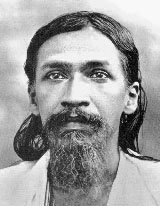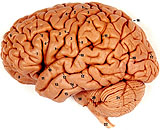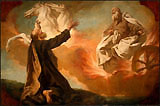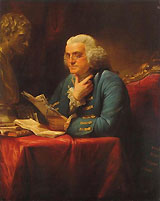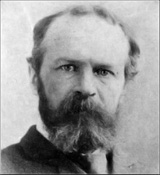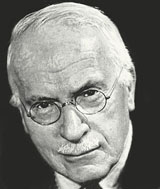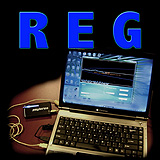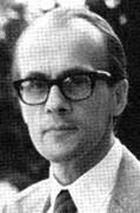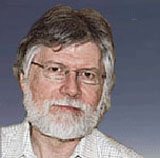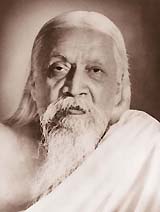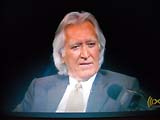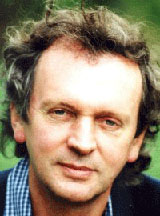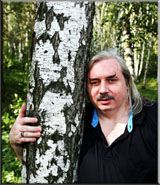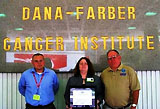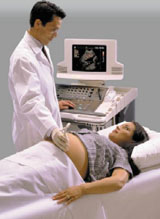The relevance of non-local studies to health
Editor‘s note:
This article extensively explores studies in parapsychology done in the West. Is the future of scientific medicine at stake? Or is the value system of a belief in ‘matter as the only reality’ being questioned? The author looks at this problem from many interesting angles...“Materialism indeed insists that, whatever the extension of consciousness, it is a material phenomenon inseparable from our physical organs and not their utiliser but their result. This orthodox contention, however, is no longer able to hold the field against the tide of increasing knowledge. Its explanations are becoming more and more inadequate and strained. It is becoming always clearer that not only does the capacity of our total consciousness far exceed that of our organs, the senses, the nerves, the brain, but that even for our ordinary thought and consciousness these organs are only their habitual instruments and not their generators. Consciousness uses the brain which its upward strivings have produced, brain has not produced nor does it use the consciousness. There are even abnormal instances which go to prove that our organs are not entirely indispensable instruments, — that the heart-beats are not absolutely essential to life, any more than breathing, nor the organised brain-cells to thought. Our physical organism no more causes or explains thought and consciousness than the construction of an engine causes or explains the motive-power of steam or electricity. The force is anterior, not the physical instrument.
Momentous logical consequences follow(1).”
Introduction
Momentous consequences indeed! Consequences that Western science is just now beginning to fathom, almost a century after Sri Aurobindo first wrote these words in The Arya (1914-15). For what Sri Aurobindo articulates to perfection here is the perspective of what is now called ‘non-local’ research. The issue at stake is the origin and bounds of consciousness. Is consciousness created by the central nervous system and limited to the confines of one body, one brain, and one life? Or can consciousness extend itself beyond physical organs to influence forces, beings, and events at a distance, without the aid of the five senses and beyond the reach of any known physical means of action on the environment? This latter type of ‘extended’ consciousness would encompass all manner of phenomena studied under the rubric of parapsychology, including telepathy, tele-kinesis, precognition, distant viewing, distant healing, ‘astral’ projection, near-death experiences, past-life memories, and a host of other so-called paranormal, occult, and/or spiritual phenomena.
While parapsychological phenomena have been reported in both the East and West since antiquity, and have been investigated by Western science since the 19th century, what is new today is the experimental rigor of the research in this field. This article will summarize some of the remarkable new research that corroborates the claims Sri Aurobindo makes above. The utility of doing so is twofold. First, for those well acquainted with Sri Aurobindo’s work, it will show how far Western science has advanced in the last century. For in point of fact, Sri Aurobindo stretched the truth a bit when he wrote the passage above: he was right about the final conclusion, but the scientific research of his day was still rather weak. In contrast, the results of many well-designed, scientific experiments today convincingly show that the explanations of reductionistic materialism are indeed “becoming more and more inadequate and strained,” as Sri Aurobindo said.
Secondly, for those who are familiar with the findings of non-local research but not so au courrant with Sri Aurobindo, this essay will suggest why his work is relevant to Western science, now more than ever. Thus far, the debate in the West has focused primarily on whether or not consciousness is in fact ‘extended’ or ‘non-local’. However, few are thinking about the next step. Suppose it is? Suppose in ten, twenty or fifty years all scientists finally accept that consciousness is non-local. Then what?
Well, what is likely to transpire then will be an intellectual stampede to read Sri Aurobindo. For to call consciousness ‘non-local’ is like calling a medical problem ‘non-cardiac’ or ‘non-renal’. This is too vague to satisfy a doctor, who wants to characterize the problem more specifically, and likewise the term ‘non-local’ is too vague to satisfy a yogi. What are the varieties of non-local experience, and how do they relate to each other and to this conventional reality of mind, life, and body? What are the limitations on the extension of consciousness, and how, and why, and under what conditions, and can these limitations be modified in any way? These are the questions of tomorrow — questions that Sri Aurobindo has already contemplated at length.
Furthermore, very few have yet seized on the spiritual significance of evolution, which, as Sri Aurobindo argued, is the single most important non-local phenomenon of all. Indeed, Sri Aurobindo wrote The Life Divine to make just this point; he would not have bothered to pen a thousand pages of text simply to say the so-called paranormal phenomena reported by ancient yogis are true. Note well that the passage above is from pp. 85-86 of The Life Divine, and the rest of the book is precisely about the ‘momentous logical consequences’ that follow. This essay cannot spell out those consequences, but it will suggest why Western thinkers should study Sri Aurobindo next.
Western historical background
The notion that consciousness is ‘extended’, or non-local, is ancient. It has been taken for granted in India since time immemorial, and has been considered seriously in Western religion and philosophy as well. However, in the West, as science developed it tended to brand all reports of non-local phenomenon as ‘mere superstition’. One particularly notable example of this occurred in 1784 when a panel of scientific experts (including Benjamin Franklin, the chemist Anton Lavoisier, and the medical doctor Joseph Guillotin, inventor of the infamous guillotine) gathered in Paris to debunk the claims of Anton Mesmer. Mesmer, the father of modern hypnosis, claimed that he could heal people at a distance by transmitting an invisible ‘animal magnetism’ to them. Franklin and his colleagues showed that there was no electro-magnetic force issuing from Msr. Mesmer, and therefore concluded that his claims were nothing but ‘heated imagination (2).’
Nonetheless, in the 1840s an English surgeon, James Braid, reported the same phenomenon as Mesmer, but departed from the discredited theory of magnetic influence. Instead, he argued that trance states could be induced by mental concentration on a single idea or object, a phenomenon he called ‘neurohypnotism’. The work of later luminaries such as Janet, Charcot, Bernheim, Breuer, and Freud firmly established hypnosis as a legitimate tool for clinical work. Freud eventually split with his mentors over the advisability of using hypnosis to treat ‘hysteria’, and established his own method of psychoanalysis for that. However, hypnosis remained widely used for a variety of purposes, and in the 20th century was accepted as a valid field for biomedical research. Yet there remained one proviso: hypnosis had to adopt the dogma of materialistic reductionism (i.e., the ‘local’ model of consciousness), which for the most part it did (2).
But that was by no means the end of parapsychology. So-called ‘psychical research’ continued throughout the 19th century, and William James presented some of its reported findings in his classic, The Varieties of Religious Experience (3). As an aside, this is a brilliant book that every Aurobindo afficionado should read. In the opening chapter, James gives a lucid rebuttal of both psychological and materialistic reductionism that very nearly says what Sri Aurobindo says in the passage above, only James did not grasp the spiritual significance of Darwin’s theory of evolution. Further on, while discussing reports of hypnosis-at-a-distance and pre-cognitive dreams, James introduces the concept of the ‘subliminal mind’ to explain such phenomena. Apparently, he borrowed the term from Meyer, an American psychical researcher, and Sri Aurobindo went on to use it in much the same sense a decade later.
James, who was trained as an experimental psychologist, appreciated the charge that psychical research did not use sufficiently rigorous experimental methodology. He looked forward to advances in the field which would correct these faults, and time has born him out. After James’s passing in 1910, his friend Carl Jung took up the cause of parapsychology and kept a vigilant eye on psychical research over the next 50 years. In retrospect, his famous split with Freud over the Oedipus complex was probably not so much about ‘libido’ as it was about the dogma of materialism. Freud, who refused to study philosophy because he thought it would bias the findings of psychoanalysis, did not understand that in fact the situation was the reverse: his a priori acceptance of the philosophical school of materialism biased him against the findings of parapsychology. Jung, on the other hand, was trained in philosophy and saw the problem clearly.
Interestingly, current biographical evidence shows that Jung vacillated most of his life on whether or not a spiritual reality actually exists independent of psyche and matter, hence the fuzzy solipsism (psychological subjectivism) of many of his major written works. Sometimes Jung seems to say that soul and Spirit really exist, and this explains telepathy, telekinesis, precognitive dreams, ghosts, and so on. At others he says that ‘synchronicity’ and paranormal events occur because in the unconscious (either personal or collective) time and space do not exist, so anything can happen. This latter explanation annoyed many thinkers, because it conflates subjective and objective reality in a wizardry of circular semantics that alter the laws of physics by the force of psychobabble. To his credit, Jung understood this dilemma and agonized over it repeatedly, until, at the end of his life, he finally settled on the strength of his own experience and innumerable similar case-reports: soul and spirit exist, matter is not the only reality (4).
Today the situation has changed, and data of the type that James and Jung hoped for are at last available. Braud has recently summarized the experimental evidence for mental influence at a distance in an excellent paper on time-displaced mental influence (5), and that material is paraphrased below. In reviewing a century of parapsychological research, Braud pulls together a stunning litany of studies which show that non-local effects on both inanimate and animate target systems are small, but consistent, repeatable, and statistically significant.
Experimental findings
Careful research conducted since the 1930s on psychokinesis (PK, or mind-over-matter) has shown that people are able to influence sensitive, labile inanimate systems at a distance by visualizing, imagining, willing, or otherwise wishing for specific outcomes. These inanimate systems usually involve random mechanical systems (such as rolling dice) or electronic random event generators (REGs). Analysis of over 700 such studies conducted from 1935 to 1987, and involving well over 2.6 million individual trials, found strong evidence for the existence of PK effects (6, 7).
Furthermore, these PK effects on inanimate test systems have been extensively replicated in living, biological systems. Early research of this type began in Russia in the 1920s and 1930s, where well-trained physiologists (Bekhterev, Platonov, Ivanov-Smolenksy, and Visiliev) conducted experiments that showed direct mental influences on motor acts, visual images and sensations, sleeping and waking, and changes in breathing and skin electrical activity. At the same time, experiments on hypnosis-at-a-distance conducted in France and Dutch studies of remote intentional influences on motor actions, produced similar findings (8, 9, 10).
And this was just the beginning. Since then, hundreds of studies of distant mental influences on biological systems have been conducted, of ever-increasing methodological quality, yielding the same results. Several good reviews and meta-analyses of this work concluded that, under certain conditions, human attention and intention can alter objectively measured parameters in distant target-systems that are shielded from all know conventional interactions, including the five senses and electromagnetic fields (11, 12, 13, 14, 15, 16, 17). The biological targets that have been thus influenced include yeast, bacteria, algae, protozoa, plants, lice, ants, chicks, mice, rats, gerbils, cats, dogs, and human beings. Cellular preparations of blood, neurons, and cancer cells have also been influenced, as well as enzyme assays. In human beings, eye movements, gross motor movements, electrical skin resistance, respiration, and EEG patterns have all been influenced. Again, while these effects are small, they are reliable and reproducible. Interestingly, they have been produced equally well by those deemed to have special talents in PK, as well as by people who try to perform PK for the first time.
Informed of both PK effects and the paradoxical phenomenon of quantum theory, in 1971 a theoretical physicist, Helmut Schmidt, introduced a new twist into studies of mental influence at a distance. Until then, studies had been conducted in ‘real time’. That is, measurements of PK effects were made at the same time that the test subject was trying to influence the target system. Thus, influence across space was established. However, Schmidt wondered whether PK effects might apply across time as well.
To test this hypothesis, Schmidt had a random number generator produce a string of 0s and 1s, at a randomly selected time when no one was watching. The string was recorded magnetically (without any human observer present) and locked away. Days later, Schmidt replayed the string of data for PK subjects, using a machine that registered each 0 as a red light, and each 1 as a green light. Then, he had the PK subjects ‘concentrate’ so as to skew the distribution of lights towards either red or green, per his instructions. The result was that, again, to a small but statistically significant degree, PK subjects were able to alter the pattern of lights from the expected random distribution of 50% each, towards either more red or more green, as instructed. The novelty of this experiment, of course, was that the string of data which determined the sequence of red and green lights had already been generated before the PK subjects attempted to change it. Schmidt therefore concluded that retroactive mental influence occurs (18).
Schmidt published his series of studies in 1976. At the same time, a French researcher named Pierre Janin independently undertook similar studies of ‘psychokinesis into the past’ in 1974, which were published in 1975 (19). Since then, Schmidt has replicated his initial findings under a variety of well-controlled experimental designs, and he even had the targeted, prerecorded data given to independent supervisors for safekeeping and prevention of fraud. The studies consistently found statistically significant effects in various inanimate systems (20, 21, 22, 23, 24). Subsequently, others have tested time-displaced, retroactive, mental influence in various living systems (25, 26, 27, 28, 29). Braud’s meta-analysis of 19 such studies conducted on living systems from 1979 to 1990 shows variations in the effect size during individual trials (from small to medium), but the overall p value for the 19 studies summed together was .00000032, which is extremely significant (30).
Perhaps the most evocative demonstration of time-displaced effects were studies of precognition in which test subjects were exposed to a random series of emotional vs. non-emotional stimuli (slides of disturbing vs. benign images). The subjects’ autonomic nervous system reactions were carefully monitored throughout the viewings (heart rate, electrical skin resistance, plethy-smographically measured finger blood volume). To no one’s surprise, autonomic arousal increased during exposure to emotional images, and decreased during non-emotional ones. However, the startling finding was when the reactions occurred. Most test subjects responded 5 seconds before each slide was randomly selected and exposed! This effect has been termed ‘presentiment’, and has been interpreted as evidence of precognition operating at an unconscious, bodily level (31, 32).
Caveats, conundrums and connections
Now, as Braud has insightfully pointed out in his review of the literature on PK, there are important caveats, conundrums and implications to consider. First, in terms of caveats, one must clearly understand the limitations of retroactive mental influence. So far, the studies of Schmidt and others do not show that one can simply change the past with a thought. Once an event has happened and been observed, it is (according to this research) ‘fixed’. That is, once an REG has punched a whole in a piece of paper, or printed a 0 or 1, the paper is not un-punched nor the 0s erased and turned into 1s. Researchers actually investigated this by examining multiple records of pre-recorded events, and found that the data ‘stayed put’in the conventional, physical sense.
Rather, what seems to be influenced in these studies is the ‘seed-moment’, or probability field, from which events unfold. In other words, retroactive mental influence seems to bias the whether an event happens in the first place. Also, labile, flexible, sensitive systems with randomness (i.e., free variability or chaos) seem most susceptible to these types of influences (33). This raises an interesting possible connection between biological systems and contemporary physics, including quantum theory and chaos theory. Nobel Laureate Sir John Eccles has proposed that neural synapses may be characterized precisely by such delicately poised, labile, random processes, making them susceptible to quantum effects and PK. Indeed, in his view, volitional action (free-will) may be nothing but internal, auto-PK (34). Other scientists have proposed that substrates for quantum effects could include ion channels, calciumions, and cyctoskeletal microtubules — all important in the central nervous system and hence in the conundrum of consciousness.
A critical connection to make from the data and ideas above is in the realm of health and healing. Conventional allopathic medicine, as well as many types of complementary/alternative medicine (CAM), typically make a ‘diagnosis’ and then proceed to ‘treat’ the condition. The nature of the ‘diagnosis’ may vary considerably across the diverse spectrum of schools of thought, but according to the results of PK research, to the degree that they observe, believe in, and hence ‘fix’ the diagnosis, to that degree they diminish the room for PK effects on healing. A wiser approach to physical and psychological healing might be to focus positive, intentional effects more on the seed-moments from which diseases and disorders originate, and be more fluid with the diagnosis.
This seems particularly important to do in allopathic biomedicine, where the power of diagnostic observation is rapidly increasing. Whereas diagnosis in homeopathy, acupuncture, Ayurveda, and even in Western psychiatry/psychology has an inherent amount of ‘wiggle room’ in it — and hence more chance for PK effects — this is increasingly less so in diagnostic imaging and genetic testing. Mammograms, CT scans, MRIs, cell pathology, genetic assays, and chromosomal studies carry an increasing burden of certainty about diagnosis that may make it harder for PK to operate, particularly if the results have been observed and confirmed by multiple clinicians, as well as the patient him or herself. As Braud points out, the last sentence is still a hypothesis and ought to be tested in future PK studies (35). However, in the meantime, common sense would dictate that it is particularly important for patients to receive the benefit of loving prayer and positive healing intention before they go for diagnostic studies, and before the studies are interpreted by experts. Nonetheless, there are cases of grave and apparently permanent (or terminal) illness that have been cured by PK healing, despite overwhelming diagnostic certainty, which we shall review later in this paper.
However, as a psychiatrist and an Aurobindonian, I would also point out that the issue of medical diagnosis is complex. While all good clinicians know it is important to maintain a patient’s sense of hope, capitalize on placebo effects, and use the power of positive suggestion as much as possible — we have also seen the tragedy of denial and of misdiagnosis. There are patients for whom the biggest problem is fear, and psychological defenses that refuse to look reality in the face. Sometimes it is better to accept the diagnosis of a physical handicap, or diabetes, or stroke, or cancer, or impending death, and get on with doing the most one can with however much time one has left. This is especially so if the psychic being (soul) has already decided to leave the body, or has taken on a malady due to karma or to do some work of transformation to aid in the evolution of consciousness. Likewise, there are times when a delay in proper diagnosis can be not just unnecessarily painful, but unnecessarily fatal. From the Aurobindonian perspective, if there were absolutely no truth in allopathic medicine, no truth in science, no truth to diagnosis, these endeavors would not have persisted in the human race since the dawn of civilization, and they would not exist today because they would have no role in the fullness of the evolution.
A second major conundrum for non-local research, from the Aurobindonian perspective, is the field’s narrow conception of ‘mental’ influence. Western biomedical science, including much of PK research, focuses on ‘mind’ and ‘body’ as though these were the two major dimensions of reality. For Sri Aurobindo, that vision of the universe is hopelessly simplistic and flawed. There are, in fact, many planes of consciousness between absolute, unmanifest Spirit and the densest depths of Matter. These range, in descending order, from the Sacidhananda down through the Supermind, Overmind, Higher Mind, Illumined Mind, Intuitive Mind, Reasoning Mind, Dynamic mind, Vital mind, Physical mind, Vital proper (with sub-divisions of higher, mid, and lower vital), Physical Vital, Subtle Physical, Physical proper, and below into the Subconscient and finally Inconscient. Furthermore, this vertical axis is complemented by a concentric axis that includes the Psychic Being (true soul), inner mental-vital-physical (subliminal), and the environmental consciousness, and all planes of both axes interpenetrate, interfuse, and interact with each other. Finally, the entire manifestation is besieged by hostile forces and the Lord of Death himself, who at every step seek to impede, distort, slay the transfiguring touch of the Divine Mother. Dark children of Her Light themselves, they at once oppose the Mahashakti and yet She uses them to assure the perfection of her work and lead all towards a supreme harmony on earth.
Before this vision of the Divine Reality, non-local studies are as yet speechless. They make no account of the various planes of consciousness from which target systems and events can be observed and influenced. They assume ‘mind’, ‘will’, ‘intention’, and so on are unitary phenomena, which they are not. And they try to describe, classify, test, and understand in an intellectually comprehensible framework, spiritual realities that are ultimately supra-rational and hence incomprehensible to the mind proper.
Also, non-local research has yet to settle the tenacious problem of materialism. For quantum theory, while paradoxical and permissive of logically inconceivable events, is still a brand of materialism. One can still say that these brains, bodies, cells, and atoms which are indivisibly connected with, and under the influence of, each other across all mental ideas of ‘time’ and ‘space’, are yet solely material phenomena. Thought and non-local consciousness may yet be only quantum effects of matter, which behave in ways we cannot and may never understand, but there is no need or proof by which to invoke soul and Spirit to explain non-local phenomena. The scientific method may not, in the end, be able to resolve the conundrum of quantum mechanics vs. spiritual philosophy, and, if so, then only mystical experience is capable of revealing to itself the fullness of the Divine Reality.
A third major conundrum to contemplate is what studies of retroactive mental influence and precognition suggest about the nature of time. The conventional way of thinking about precognition is to posit that a person’s mind somehow ‘reaches into’ and reads the future. However, another way of viewing the phenomenon is to say that precognition involves the future reaching back into the present and changes the mind of the test subject. That such reaching-back is possible is demonstrated by all the experiments on retroactive mental influence described above. The importance of the second hypothesis is that, again, it leads us back to Sri Aurobindo. For if one wants to think about Time and ‘the future’ as a real force, then Sri Aurobindo is the expert par excellence to consult on this issue:
The Being can have three different states of its consciousness with regard to its own eternity. The first is that in which there is the immobile status of the Self in its essential existence…this is what we distinguish as its timeless eternity. The second is its whole-consciousness of the successive relations of all things belonging to a destined or an actually proceeding manifestation, in which what we call past, present and future stand together as if in a map or settled design…this is the stable status or simultaneous integrality of Time….The third status is that of a processive movement of Conscious-Force and its successive working out of what has been seen by it in the static vision of the Eternal; this is the Time movement. But it is in one and the same Eternity that this triple status exists and the movement takes place….For it can see the whole Time development from outside or from above the movement; it can take a stable position within the movement and see the before and the after in a fixed, determined or destined succession; or it can take instead a mobile position in the movement, itself move with it from moment to moment and see all that has happened receding back into the past and all that has to happen coming towards it from the future; or else it may concentrate on the moment it occupies and see nothing but what is in that moment and immediately around or behind it. All these positions can be taken by the being of the Infinite in a simultaneous vision or experience(36).”
What Sri Aurobindo states here is that the common human perception of ‘time’ as a boat of the present drifting away from a receding past towards an unknown future, is due to the dividing and limited nature of mental consciousness. Time becomes a vast and omnipresent reality in the third status (Time movement) above, and a pre-ordained and accomplished fact in the second status (simultaneous integrality of Time). Naturally then, the nature of Time and the ‘explanation’ for precognition vary according to the level of consciousness from which one observes events, and to the status of Time with which one identifies one’s consciousness in the Infinite Being.
Current research and case studies
In the 1990s, an American medical doctor, Larry Dossey, began to write books summarizing a wealth of data about non-local events in medical care and research. In the book Healing Words (37), he discussed a randomized, controlled study of intercessory prayer for cardiac patients that has since been replicated in a more methodologically rigorous study (38). Subsequently, he also founded a peer-reviewed journal that publishes high-quality studies in complementary/alternative medicine (CAM) and non-local phenomena, Alternative Therapies in Health and Medicine. Dr. Dossey’s editorials proffer a wealth of both historical and contemporary data about various aspects of non-local studies, and he is to be congratulated for developing a forum for talented researchers from around the world to publish excellent work.
In one recent editorial, Dr. Dossey cited remarkable statistics compiled by the British biologist, Rupert Sheldrake, who is a widely known proponent of non-local phenomena. In response to the charge that parapsychology (non-local studies) is‘unscientific,’ Dr. Sheldrake reviewed the world’s leading scientific journals and found that about 0% of studies in the physical sciences are blinded or double-blinded. In the biological sciences the figure is about 0.8%, in psychology and animal behavior about 4.9%, and in parapsychology about 85.2%. This means that, on average, parapsychological studies are now more methodologically rigorous than most other areas of science — and certainly much more so than psychiatry and psychotherapy (39).
For readers who wish to learn more about contemporary non-local studies, Dr. Dossey lists a number of excellent books on the subject. The first two below are the most scholarly reviews of parapsychology pure and simple, while the others are broader in scope and less technical:
1. The Conscious Universe: the scientific truth of psychic phenomenon, by Dean Radin, Ph.D.
2. Parapsychology: the controversial science, by Richard Broughton, Ph.D.
3. Parapsychology, Philosophy and Spirituality: a post-modern exploration, by David Ray Griffin, Ph.D.
4. Religion and Scientific Naturalism: over-coming the Conflicts, by David Ray Griffin, Ph.D.
5. Critical Reflections on the Paranormal, edited by Michael Stoeber, Ph.D. and Hugo Meynell, Ph.D.
6. Spirituality and Human Nature, by Donald Evans
7. Body, Mind, Spirit: exploring the parapsychology of spirituality, by Charles Tart, Ph.D.
In addition to the above, Alternative Therapies has also published two case studies of distant healing that are remarkably well documented (40). Both cases presented below are summarized from that article, and involved the work of a Russian healer, Nicolai Levashov, who lives in San Francisco. Mr. Levashov, who is trained in theoretical physics, believes that the physical body is contained within several subtle energy bodies that constitute the ‘primordial’ or ‘primary’ matter from which cells and organs evolve. He says that by using conscious-intention at a distance, he can manipulate the interplay between primordial matter and physical matter so as to kill off diseased cells, regenerate healthy tissues, and conduct genetic engineering.
The first case was of a 3-month-old girl who was diagnosed with a glioblastoma multiform (GBM) in 1993. This type of brain tumor is considered to be the most aggressive of brain cancers, and even with treatment it is incurable and ultimately fatal. Outside of cancer research centers which offer newer, experimental protocols, patients with GBM are expected to live only 6-12 months, even with standard treatment (surgery, radiation, and chemotherapy).
In the case of this baby girl, she was referred to Mr. Levashov after her neurosurgeon deemed she was terminal. She had already undergone three craniotomies and all the usual chemotherapies. Her diagnosis was certain, as established by pathology, serial head scans (CT), and course of disease. Mr. Levashov began by giving the girl 20 treatments in person, during which he sat next to her for a few minutes and directed healing energy at her. The patient responded with massive sinus drainage, vomiting and diarrhea (release of toxins). After 2 months the drainage ceased and the child began to thrive again.
Three months after Mr. Levashov’s first treatment, the neurosurgeon had to perform a fourth craniotomy on the girl for a recurrent right frontal mass. Much to his surprise, he found the tumor had turned into necrotic fluid and was surrounded by a thick wall of fibrous tissue. A repeat brain scan at 5 months post-Levashov showed the tumor had entirely disappeared and been replaced by fluid. The patient was doing extremely well — happily playing with other children — but the surgeon cautioned the family she would have permanent mental deficits. Subsequent brain scans from 1996 through 1999 showed no regrowth of the tumor, and the child continued with distant-healing sessions Mr. Levashov conducted over the phone with the girl’s mother while the child was asleep. The girl frequently reported seeing Mr. Levashov and ‘his rainbow’ in her dreams. In the year 2000, at the age of 8, the child was an intelligent, articulate, socially active young girl, and a class leader at school. There were no mental or speech problems, though she did have a mild and slowly improving left-sided weakness in her arms and legs.
Now, anyone who knows something about cancer will recognize that this case study is extraordinary and beyond the bounds of chance events. I myself work in the Neurooncology Program at the Dana Farber Cancer Institute, Boston, one of the most reputable cancer centers in the United States, and the neurologists there have never seen a cure, ever. At best, they have a few cases of long-term remission (5-10 years) after complex research protocols, but over 99.99% of the patients die even with state-of-the-art care. And they have never seen the recovery of full cognitive function, as described above, after such extensive disease and surgical excision. It is notable that the girl in this case has absolutely no signs of frontal lobe syndrome (apathy, lack of motivation, emotional blandness) or irritability, which should have occurred given the location of the tumor. The second case involves a boy who was presented in 1998 for bilateral crypto-orchidism (undescended testicles) dating to infancy. The child had been diagnosed with testicular absence at 1 month of age, but no intervention was sought until the family brought him to the hospital at age 5. At that time surgery to bring the testicles down was recommended, but the family declined (reason not reported). In 1998, at age 11, serial tests of free test-osterone showed a near absence of any hormone production (0.01 ng/dL), confirming non-functioning testicles and indicating that the condition should be permanent, as testicles do not spontaneously grow at age 11. Chromosome studies showed a genetic male (46-XY), but doctors suspected the original cause of the undescended testicles was an as-yet-uncharacterized genetic defect.
In 1999, Mr. Levashov began distant healing on the patient, at the mother’s request. Mr. Levashov noted it was rather late to make the attempt, but he agreed to try on the condition that thorough medical records were kept, which was done. Abdominal ultrasound in March, 2000, revealed the formation of a new structure on the right, thought to be a testicle, and an amorphous mass on the left side. Testosterone level rose to 2.8 ng/dl. Mr. Levashov continued his distant healing work, and further radiological studies in May, 2000, visualized new channels of descent for the testicles, plus the presence of rudimentary structures thought to be testicles.
In August, 2000, testosterone levels reached near normal for adolescents (6.0 ng/dL), indicative of functioning but as yet undescended testes. Ultrasound in March, 2001, revealed the presence of bilateral, perfectly formed testicles within the abdominal wall, and testosterone level reached 10.0 ng/dL. Surgery was recommended to bring the testicles down, but at the date of publication in 2002, the family had opted to continue the distant healing work with Mr. Levashov because channels for testicular descent were clearly evident in the abdomen. Doctors reviewing the case acknowledged that functional testicles had appeared in a genetic male who had presented well past the age at which testicles can develop, even with surgical and/or hormonal treatment.
Both of these cases are so well-documented using current medical technology at reputable centers in the United States, that it is impossible to dismiss them as either hoaxes or wishful thinking. They are also so dramatic that it is very hard to explain them without invoking the authenticity of parapsychological phenomena. It is true that one may still maintain that both cases involved sheer random chance, and say that these two people would have healed as they did without the intervention of Mr. Levashov, whose healing work was unrelated to the medical outcome. However, it frankly takes more’blind faith’ to accept this statistical explanation than it does to accept the veracity of willed non-local phenomena, particularly in light of all the other research cited elsewhere in this paper.
Conclusion
This essay has reviewed the large amount of experimental and case-based evidence that contemporary Western science has produced which supports the claim that consciousness is non-local. Accepting the veracity of this evidence does not automatically prove the existence of the Divine, nor prove the truth of Indian spiritual philosophy, because it is still possible to interpret all of the phenomena outlined above as due to quantum effects at the level of matter. The existence of soul and Spirit as realities independent of matter has not yet been experimentally verified — and may never be. However, at the minimum, the legitimacy of Indian spiritual psychology has been exonerated by Western experimental science, because phenomena which have been studied and cultivated in India for thousands of years can no longer be dismissed by science as impossible or unsubstantiated. Intentional influence across time and space are now established facts. Furthermore, because the data which justify the essential arguments of The Life Divine are now in, Sri Aurobindo’s pioneering effort to interpret evolution as a non-local manifestation of consciousness is both plausible and rational. One may still contest his theistic critique of the philosophy of materialism. However, whoever undertakes such an enterprise must first learn what he had to say — and then come up with a better alternative hypothesis. Good luck.
References
1. Sri Aurobindo. The Life Divine. Pondicherry; Sri Aurobindo Ashram Trust, 1970, pp. 85-6.
2. Spiegel H., Greenleaf M., Spiegel D. Hypnosis. In: Sadock B., Sadock V. eds. Comprehensive Textbook of Psychiatry, 7th edition. Philadelphia; Lippincott Williams & Wilkins, 2000, pp. 2128-45.
3. James W. The Varieties of Religious Experience. New York; Penguin, 1902.
4. McLynn F. Carl Gustav Jung: a biography. New York; St. Martin’s Press, 1996, pp. 459-509.
5. Braud W. Wellness implications of retroactive intentional mental influence: exploring an outrageous hypothesis. Altern Ther Health Med. 2000;6(1): 37-48.
6. Radin D.I., Ferrari D.C. Effects of consciousness on the fall of die: a meta-analysis. J. Sci Exploration. 1991;5:1-24.
7. Radin D.I., Nelson R.D. Evidence for consciousness-related anomalies in random physical systems. Found Physics. 1989; 19: 1499-1514.
8. Vasiliev L.L. Experiments in Distant Influence. New York; Dutton, 1976.
9. Braud W.G. Remote mental influence of electrodermal activity. J. Indian Psychology. 1992; 19(1):1-10.
10. Braud W.G. On the use of living target systems in distant mental influence research. In: Shapin B., Coly L., eds. New York; Parapsychology Foundation, 1993,pp. 149-88. Psi Research Methodology: a re-examination.
11. Braud W.G. Distant mental influence of rate of hemolysis of human red blood cells. J. Am Soc Psychical Res. 1990;84:1-24.
12. Braud W.G, Schlitz M.J. A methodology for the objective study of transpersonal imagery. J Sci Exploration. 1989;3:43-63.
13. Braud W.G, Schlitz M.J. Consciousness interactions with remote biological systems: anomalous intentionality effects. Subtle Energies. 1991;2(1):1-46.
14. Braud W., Davis G., Wood R. Experiments with Matthew Manning. J Soc Psychical Res.
1979; 50(782):199-223.
15. Solfvin J. Mental healing. In: Krippner S., ed. Advances in Parapsychology Research. Vol 4. Jefferson, NC; McFarland and Co., 1984, pp. 31-63.
16. Benor D.J. Healing Research. Vols 1-4. Munich, Germany; Helix Verlag, 1993.
17. Targ E. Evaluating distant healing: a research review. Altern Ther Health Med1997; 3(6): 74-8.
18. Schmidt H. P.K effect on pre-recorded targets. J Am Soc Psychical Res. 1976;70(3):267-91.
19. Janin P. Nouvelles perspectives sur les relations entre la psyche et le cosmos. Rev Metaphysique1973.
20. Schmidt H., Morris R., Rudolph L. Channeling evidence for a psychokinetic effect to independent observers. J. Parapsychology. 1986; 50: 1-15.
21. Schmidt H., Schlitz M. A Large-Scale Pilot PK Experiment with Pre-recorded Random Events: Mind Science Foundation Research Report. San Antonio, TX; Mind Science Foundation, 1988.
22. Schmidt H., Morris R.L., Hardin C.L. Channeling Evidence for a Psychokinetic Effect to Independent Observers: an Attempted Replication: Mind Science Foundation Research Report. San Antonio, TX; Mind Science Foundation, 1990.
23. Schmidt H., Braud W. New P.K. tests with an independent observer. J Parapsychology.
1993; 57: 227-40.
24. chmidt H., Stapp H. PK with pre-recorded random events and the effects of pre-observation. J Parapsychology. 1993; 57: 331-49.
25. Gruber E.R. Conformance behavior involving animal and human subjects. Eur J Parapsychology. 1979;3(1):36-50.
26. Gruber E.R. PK effects on pre-recorded group behaviour of living systems. Eur J Parapsychology. 1980;3(2):167-75.
27. Snel F.W.J.J., van der Sijde P.C. The effect of retroactive distance healing on Babesia rhodani (rodent malaria) in rats. Eur J Parapsychology. 1990; 8: 123-30.
28. Schmidt H. Random generators and living systems as targets in retro-PK experiments. J Am Soc Psychical Res. 1997;91(1): 1-13.
29. Radin D.I, Machado D.R, Zangari W. Effects of distant healing intention through time and space: two exploratory studies. Proceedings of Presented Papers: The 41st Annual Convention of the Parapsychological Association. Halifax, Nova Scotia, Canada; Parapsychological Association; 1998, pp. 143-61.
30. Op cit. Wellness implications of retroactive intentional mental influence: exploring an outrageous hypothesis. Altern Ther Health
Med2000; 6(1): 37-48.
31. Radin D.I. Unconscious perception of future emotion: an experiment in presentiment. J Sci Exploration. 1997; 11(2): 163-80.
32. Bierman D.J., Radin D.I. Anomalous anticipatory response on randomized future conditions. Percept Motor Skills. 1997; 84: 689-90.
33. Op cit. Wellness implications of retroactive intentional mental influence: exploring an outrageous hypothesis. Altern Ther Health Med 2000; 6(1): 37-48.
34.Eccles J.C. The human person in its two-way relationship to the brain. In: Morris J.D., Roll W.G., Morris R.L., eds. Research in Parapsychology 1976. Metuchen, NJ; Scarecrow Press, 1977, pp. 251-62.
35.Op cit. Wellness implications of retroactive intentional mental influence: exploring an outrageous hypothesis. Altern Ther Health Med 2000; 6(1): 37-48.
36. Op. Cit. The Life Divine. Pondicherry; Sri Aurobindo Ashram Trust, 1970, pp. 362-3.
37. Dossey L. Healing Words: the Power of Prayer and the Practice of Medicine. San Francisco, CA; Harper, 1993.
38. Harris W.S., Gowda M., Kolb J.W. A randomized, controlled trial of the effects of remote, intercessory prayer on outcomes in patients admitted to the coronary care unit. Arch Intern Med 1999; 24: 79-88.
39. Dossey L. Blindsided: criticism of CAM from an unexpected source. Altern Ther Health Med 2000; 6(5): 82-5.
40. Koopman B.G., Blasband R.A. Two case reports of distant healing: new paradigms at work? Altern Ther Health Med 2002; 8(1): 116-20.
Share with us (Comments, contributions, opinions)
When reproducing this feature, please credit NAMAH, and give the byline. Please send us cuttings.
